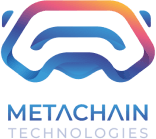
Discover how to make money out of an NFT marketplace.
A Comprehensive Guide on Revenue Streams in NFT Marketplaces
Introduction
The world of non-fungible tokens (NFTs), the idiosyncratic class of digital assets on the blockchain, is as beguiling as it is multifaceted. As the market continues to thrive and expand, it's essential to comprehend the various ways NFT marketplaces generate income and remain sustainable. A peek into this universe offers fascinating insights into the intricate revenue models that govern these digital bazaars, outlining a roadmap for prospective NFT entrepreneurs and artists alike.
Part 1: Revenue Models – The Architectural Framework of NFT Marketplaces
Commission-Based Revenue Model:
Viewed as the circulatory system of NFT marketplaces, the commission-based revenue model is central to their operation. This model resembles a classic sales strategy, where a nominal percentage from each transaction on the platform is retained as commission. Renowned platforms such as OpenSea and Rarible use this strategy, deriving profit from the millions of transactions that take place within their digital confines (2). This fee helps maintain the platform, ensuring it can continue to serve as a vibrant hub for digital trade.
Listing Fees:
Prior to any transaction, a digital work must be presented to potential buyers. Here lies the essence of listing fees. Creators are charged an amount to showcase their digital masterpieces to the public, a process akin to the rent or fee paid in a physical gallery or auction house (3). Depending on the marketplace's unique strategy, these fees can either be flat rates or tiered structures. These listing fees serve as another pillar in the revenue model of NFT marketplaces, allowing them to continue providing their essential services.
Premium Features:
Beyond standard features and capabilities, NFT marketplaces also offer their users the opportunity to elevate their experience through premium features. These enhanced features can take various forms, including but not limited to heightened visibility for listings, priority placement in searches or lists, and access to advanced analytics tools (4). Available for a fee, these premium features not only augment the user experience but also serve as another avenue for the marketplaces to generate income.
Part 2: Advanced Revenue Models – A Step Forward in the Landscape
Transaction Fees:
NFT marketplaces also levy transaction fees, separate from commission charges. They ensure the smooth facilitation of transactions and help cover the costs associated with verifying and processing them on the blockchain, sometimes referred to as 'gas' fees (5).
Advertising and Sponsorship:
NFT marketplaces also have a unique opportunity to partner with brands and businesses in the NFT ecosystem, opening the doors for advertising and sponsorship revenue. This additional income stream must, however, be balanced against the need to maintain a user-friendly and non-intrusive platform environment (6).
White Label Solutions:
In the quest for diversified revenue streams, NFT marketplaces have also begun offering white label solutions. This involves licensing their platform software to other businesses, allowing these companies to create their own branded NFT marketplaces using the established technology and infrastructure (7).
Secondary Market Revenue:
As NFTs change owners, marketplaces also seize the opportunity to take a cut from the secondary market sales. This fee or commission from resales and trades allows the platform to profit not only from the initial sale but also from the ongoing life of the NFT (8).
Creator Tools and Services:
NFT marketplaces often provide tools and services to assist creators in navigating the NFT world. This can include minting platforms, analytics dashboards, and other resources. These services often come with associated fees or charges, thus creating another revenue stream for the marketplace (9).
Part 3: Controversial & Experimental Revenue Models – Uncharted Waters
Data Sales:
The monetization of user data presents an opportunity for additional revenue, but it’s not without its ethical concerns. Some NFT marketplaces may choose to sell anonymized or aggregated data to third parties. However, this must be approached carefully, with a strict adherence to privacy laws and ethical guidelines (10).
Other Revenue Models:
The NFT marketplace is continually evolving, and so too are its revenue models. New mechanisms such as membership fees and staking mechanisms have emerged, adding to the symphony of ways these platforms can generate income. However, these models are still in their infancy and will require careful monitoring to ensure their success and sustainability.

In Conclusion, the path to profitability for NFT marketplaces lies in a diverse portfolio of revenue streams. With the burgeoning growth of the NFT marketplace, it is clear that embracing user-centric models, diversifying revenue streams, and navigating ethical dilemmas will shape the future of these digital bazaars. With each new development in this space, the world of NFT marketplaces comes closer to unlocking its full potential in the digital realm.
Need Expert assets? click here
Anas Madi
Forward thinking leader of a distinguished team of technical experts.References
- 1) What are NFTs and how do they work?, Investopedia
- 2) OpenSea: Marketplace for NFTs, OpenSea
- 3) A guide to NFTs: What are they, and why did someone spend $69m on a digital artwork?, The Guardian
- 4) Demystifying NFTs: A Guide to the Latest Crypto Phenomenon, Visual Capitalist
- 5) Blockchain Transaction Fees, Investopedia
- 6) How do NFT Marketplaces make money?, Blockchain Council
- 7) White-Label Marketplaces in NFTs, intme.com
- 8) NFT Secondary Marketplaces, DappRadar
- 9) NFTs and the Creator Economy, Forbes
- 10) The Ethics of Data Selling, Information Age




